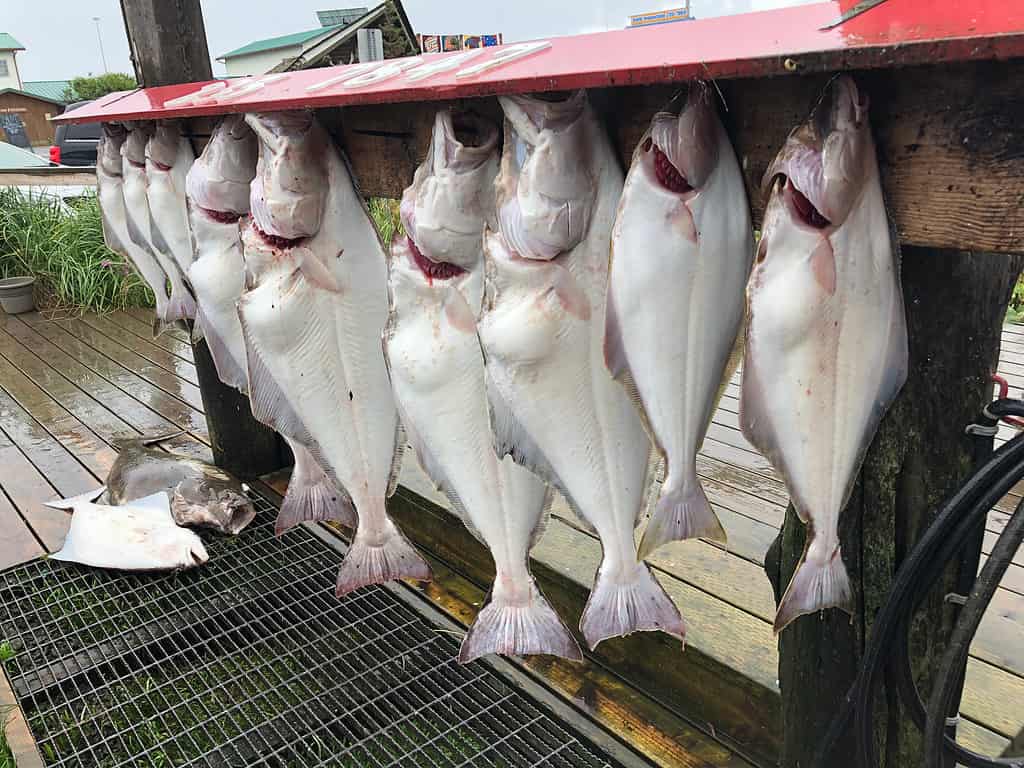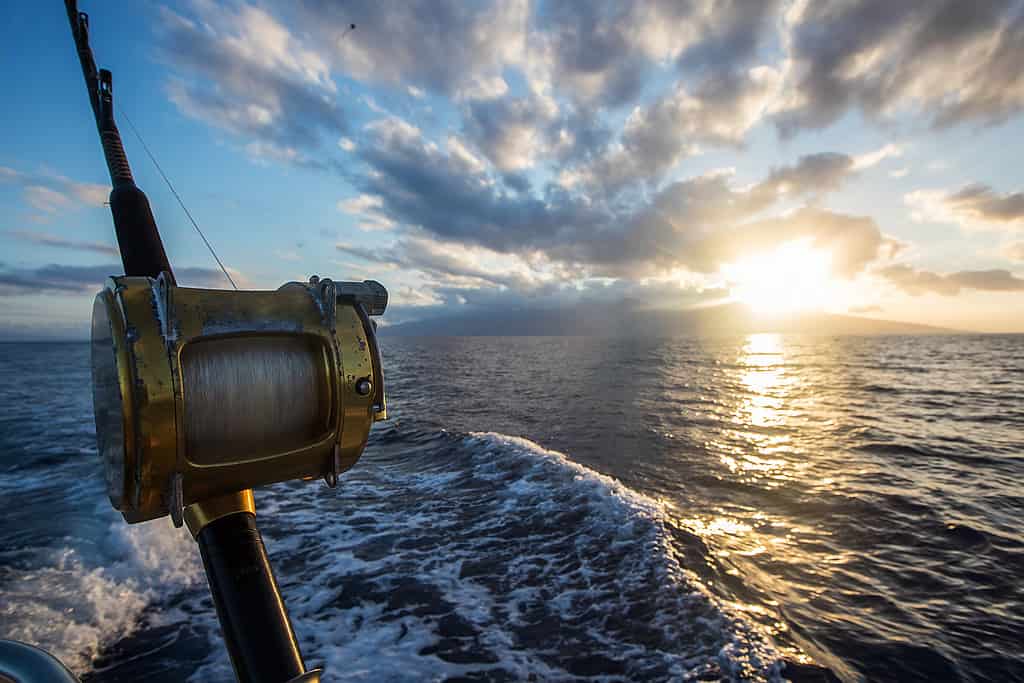Exploring the Thrilling World of Halibut Fishing in Alaska
Alaska is a world-renowned destination for halibut fishing; anglers often catch some of the world’s largest and most impressive halibut. With its pristine waters and abundant marine life, Alaska provides the perfect environment for these hearty fish to thrive.
Whether you’re a seasoned angler or a first-time fisherman, halibut fishing in Alaska is an unforgettable experience. The thrill of hooking into a giant halibut and the challenge of reeling it in is sure to be a heart-racing adventure. And once you land your catch, you’ll be rewarded with some of the most delicious fish you’ve ever tasted.

Halibut is a staple in most Alaska towns.
©melissamn/Shutterstock.com
Peak Season: Unveiling the Best Time to Go Halibut Fishing in Alaska for Abundant Catches
The peak season for halibut fishing in Alaska generally runs from mid-May to mid-September. This is a fantastic time to visit Alaska and enjoy its beautiful summers. During this time, the warmer water temperatures are a halibut’s dream. They are more active and feed heavily. However, halibut can be caught year-round in Alaska. The winter months can offer some excellent fishing opportunities, especially for trophy-sized halibut. If you want fewer people around competing for the best fishing, the winter is also a good choice. On the flip side, the weather can be unpredictable and challenging during the winter, so being prepared is essential.

Summers in Alaska are the peak season for halibut fishing.
©Mariia Suvorova/Shutterstock.com
Fishing Regulations and Quotas: Understanding the Size and Bag Limits, as well as the Annual Quotas for Halibut
The Alaska Department of Fish and Game (ADFG) sets strict regulations for halibut fishing to protect the population. These regulations include size limits, bag limits, and annual quotas. The current size limit for halibut in Alaska is 32 inches or greater. The bag limit is two fish per day per angler. The yearly quota for halibut is set each year by the North Pacific Fishery Management Council (NPFMC). Knowing all applicable fishing regulations before going halibut fishing in Alaska is necessary to ensure you follow the local laws and protect the wildlife in the area.
Cost Considerations: Exploring the Expenses Associated with Halibut Fishing Charters, Licenses, and Gear Rental
The cost of halibut fishing in Alaska can vary greatly depending on several factors, including the length of your trip, the type of charter you choose, and the gear you need to rent.
If you’re new to halibut fishing, it’s recommended that you book a charter with a reputable guide. This is the best way to ensure you have the proper gear and knowledge to catch halibut successfully. Charter rates vary depending on the location, the boat’s size, and the trip’s length. However, you can pay around $500-$1000 daily for a quality halibut fishing charter.
In addition to the charter fee, you’ll also need to purchase a fishing license. Alaska resident fishing licenses cost $40 per year, while non-resident fishing licenses cost $145.
You can rent your halibut fishing gear from most charter operators if you need to get it. Gear rental fees typically range from $25-$50 per day.

Deep-water fishing is the best way to locate halibut.
©MPH Photos/Shutterstock.com
Tips and Recommendations: Essential Guidelines and Techniques for a Successful and Memorable Halibut Fishing Experience in Alaska
Here are a few tips and recommendations for a successful and memorable halibut fishing experience in Alaska:
- Book your charter in advance, especially if traveling during the peak season.
- Choose a reputable charter operator with experienced guides.
- Purchase your fishing license before you go.
- Bring appropriate clothing and gear, including rain gear, warm clothes, and sunscreen.
- Listen to your guide’s instructions and follow their advice.
- Be patient and persistent. Catching a halibut may take some time, but the wait is worth it.
- Book your charter in advance, especially if traveling during the peak season.
- Choose a reputable charter operator with experienced guides.
- Purchase your fishing license before you go.
- Bring appropriate clothing and gear, including rain gear, warm clothes, and sunscreen.
- Listen to your guide’s instructions and follow their advice.
- Be patient and persistent. Catching a halibut may take some time, but the wait is worth it.
- Use live bait, such as herring or mackerel. Halibut are attracted to the movement and scent of live bait.
- Fish near the bottom. Halibut are bottom-dwelling fish, so you’ll need to fish your bait near the bottom of the ocean floor.
- Use a heavy-duty rod and reel. Halibut are powerful fish, so you’ll need a heavy-duty rod and reel to land them.
- Be patient and don’t give up. Halibut fishing can be challenging, but it’s also a gratifying experience.
Halibut fishing in Alaska is an experience you’ll never forget. You want to make sure you’re prepared and plan to ensure the best possible trip. Following these insider tips, novice anglers can have a successful fishing trip to one of the most beautiful places in the world.
The photo featured at the top of this post is © Jon C. Beverly/Shutterstock.com
Thank you for reading! Have some feedback for us? Contact the AZ Animals editorial team.






